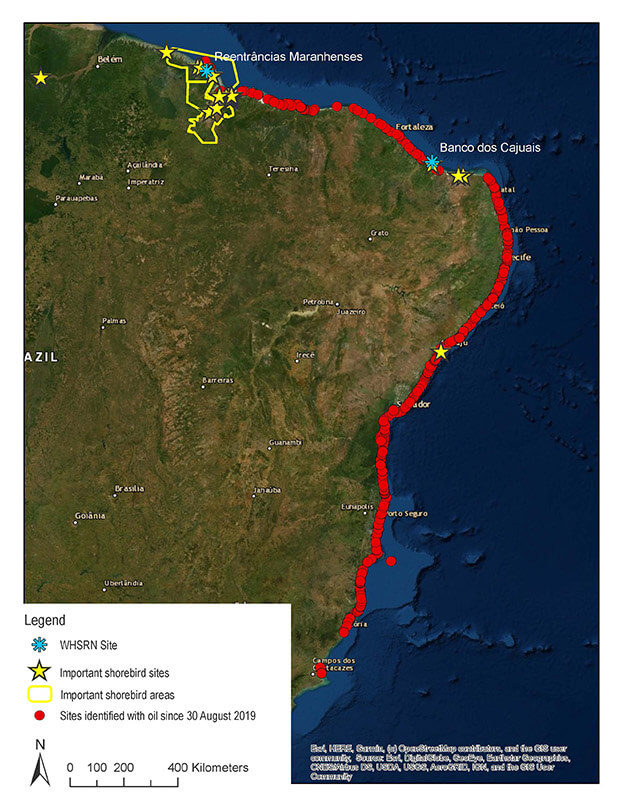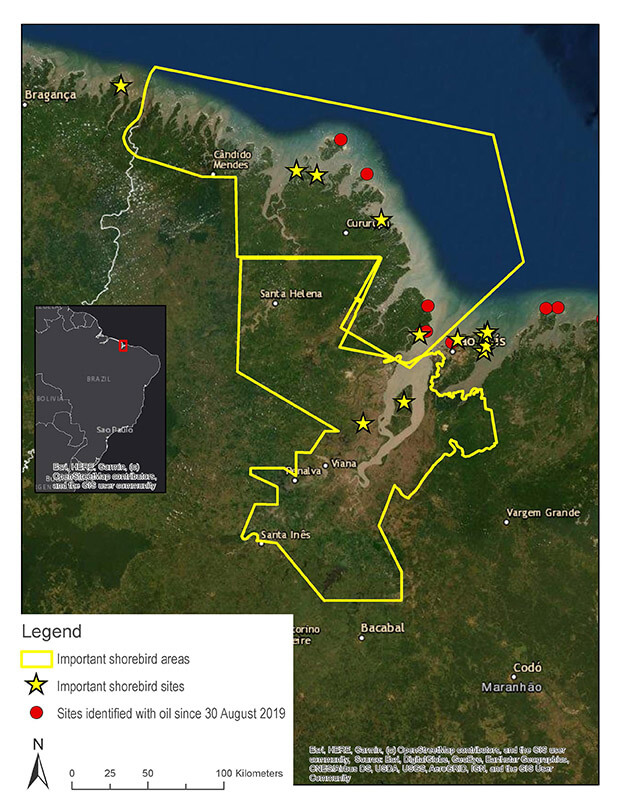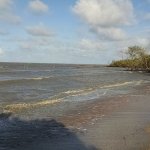Crude oil sludge first appeared along the Northeastern coast of Brazil more than three months ago, yet the cause of the spill remains unknown and the extent of the damage is still unfolding.
Our WHSRN partners in Brazil helped us compile an update on the latest facts and figures about this devastating environmental disaster.
Since the first signs of the spill came ashore at the end of August, crude oil deposits have been observed across more than 4,000 kilometers (~2,480 miles) of the Brazilian coast – a distance longer than the entire Atlantic coast of the United States. The Brazilian Institute of Environment and Renewable Natural Resources (IBAMA by its Portuguese acronym) has been publishing a new map on a daily basis highlighting the status of affected areas. As of December 15th, oil has been found at 959 sites since August 30th, stretching from Maranhão State in the north all the way to Rio de Janeiro State. According to an official statement from the Brazilian Navy, 5,000 tons of oil have already been removed from beaches, though the amount that remains has yet to be determined.
Sites affected by the oil spill since 30 August 2019, and their overlap with important shorebird sites and areas. As beaches are cleaned and more oil is deposited, the status of these sites is continually being updated to reflect whether they are now ‘clean’, or still have ‘sparse oil’ or ‘moderate oil’. New sites where oil is still being discovered are also added daily. Currently, there are 441 clean sites, 507 with less than 10% oil contamination, and 11 with more than 10% contamination. Each ‘site’ represents a 1km area along the coast. The important shorebird sites and areas were identified by the Atlantic Flyway Shorebird Initiative.
This area of northwest Brazil, which includes WHSRN site Reentrâncias Maranhenses, is one of the most important shorebird areas along the northern coast of South America. Several sites have been identified with oil, but the impact of the contamination is still unknown, as the site is remote and difficult to access.
Reentrâncias Marenhenses, a WHSRN Site of Hemispheric Importance in Maranhão State, sits at the northern end of the spill’s detected range. The site encompasses more than 2.68 million hectares (6.6 million acres) of bays, estuaries, and sandy beaches. “Oil has been detected at several locations along the site’s coastline,” reported Juliana Bosi de Almeida of WHSRN partner organization SAVE Brasil, “but the area is remote and difficult to survey so very little is known about the impact of oil in this area, one of the most critical sites for shorebirds along Brazil’s northern coast.”
Further south in the state of Ceará, “it appears that the Banco dos Cajuais will suffer a minimal impact from this oil spill,” said Jason Mobley of WHSRN partner organization Aquasis, referring to Brazil’s WHSRN Site of Regional Importance. At this site, “visible residue [is] mostly limited to softball size, and smaller, crude oil deposits on some beaches and the presence of additional oil slicks in offshore areas. The impact to seagrass beds, bivalves, fisheries and other important resources in the area is most concerning and will be difficult to determine.”
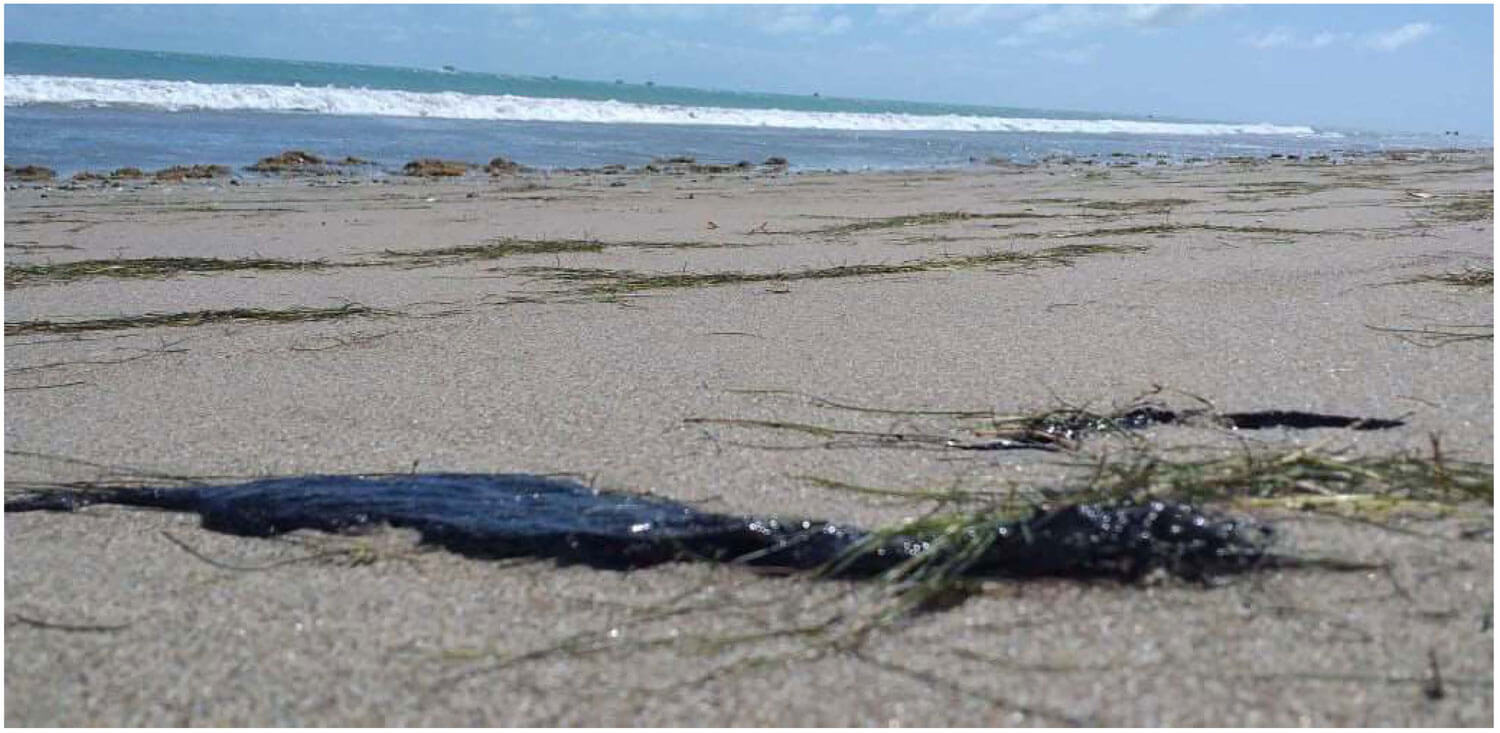
Crude oil material on the beaches of the WHSRN Site Banco dos Cajuais. Photo: Aquasis Migratory Bird Conservation Program.
This contamination presents pressing concerns for the millions of shorebirds currently wintering in Brazil, as our colleagues from Manomet’s Shorebird Recovery Program elaborated in a recent news article. “From our work in the Gulf of Mexico after the Deepwater Horizon spill in 2010, we know that even small amounts of light oiling can affect shorebird flight dynamics and thermoregulation,” wrote shorebird biologist Shiloh Schulte. “Oil ingestion through preening and contaminated prey leads to hydrocarbon concentrations in the blood and likely affects reproductive success.”
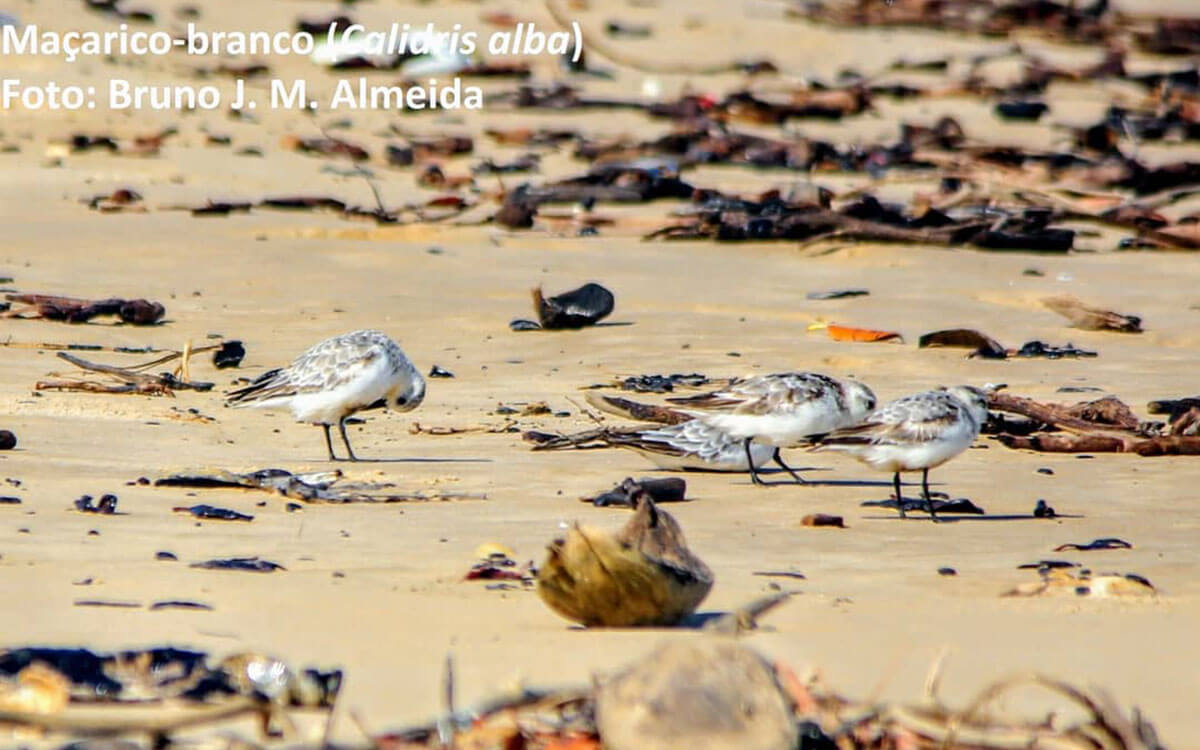
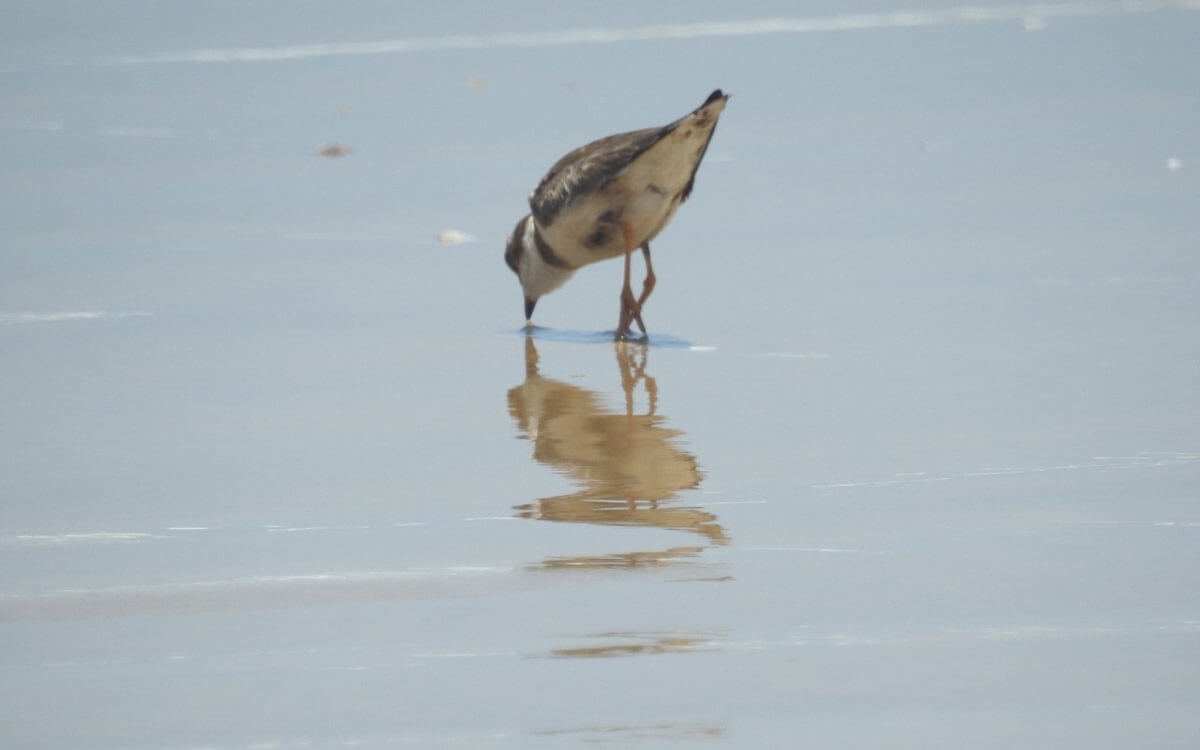
Left: A Sanderling (Calidris alba) preens oil off its belly feathers. Photo: Bruno Jackson Melo de Almeida. Right: A Semipalmated Plover (Charadrius semipalmatus) with oil on its underside. Photo: Renato Gaban-Lima.
It is still just the early days of what will be a long term effort to assess the impacts of this mysterious oil spill. WHSRN partners in Brazil are working tirelessly to support cleanup efforts and survey the impact to shorebirds and their habitats, and the WHSRN Executive Office will continue to provide updates as they become available.
This is a critical time for shorebirds.
If you would like to support efforts to reduce the effects of this oil spill on migratory shorebirds, you can donate here and specify “Brazil oil spill” in the comment box. WHSRN will work with site partners to ensure that donations support cleanup efforts, survey the spill’s impact on shorebirds and their habitats, and help restore shorebird populations.
Cover Photo: Sanderlings with oil on their feathers. Photo: Bruno Jackson Melo de Almeida.




